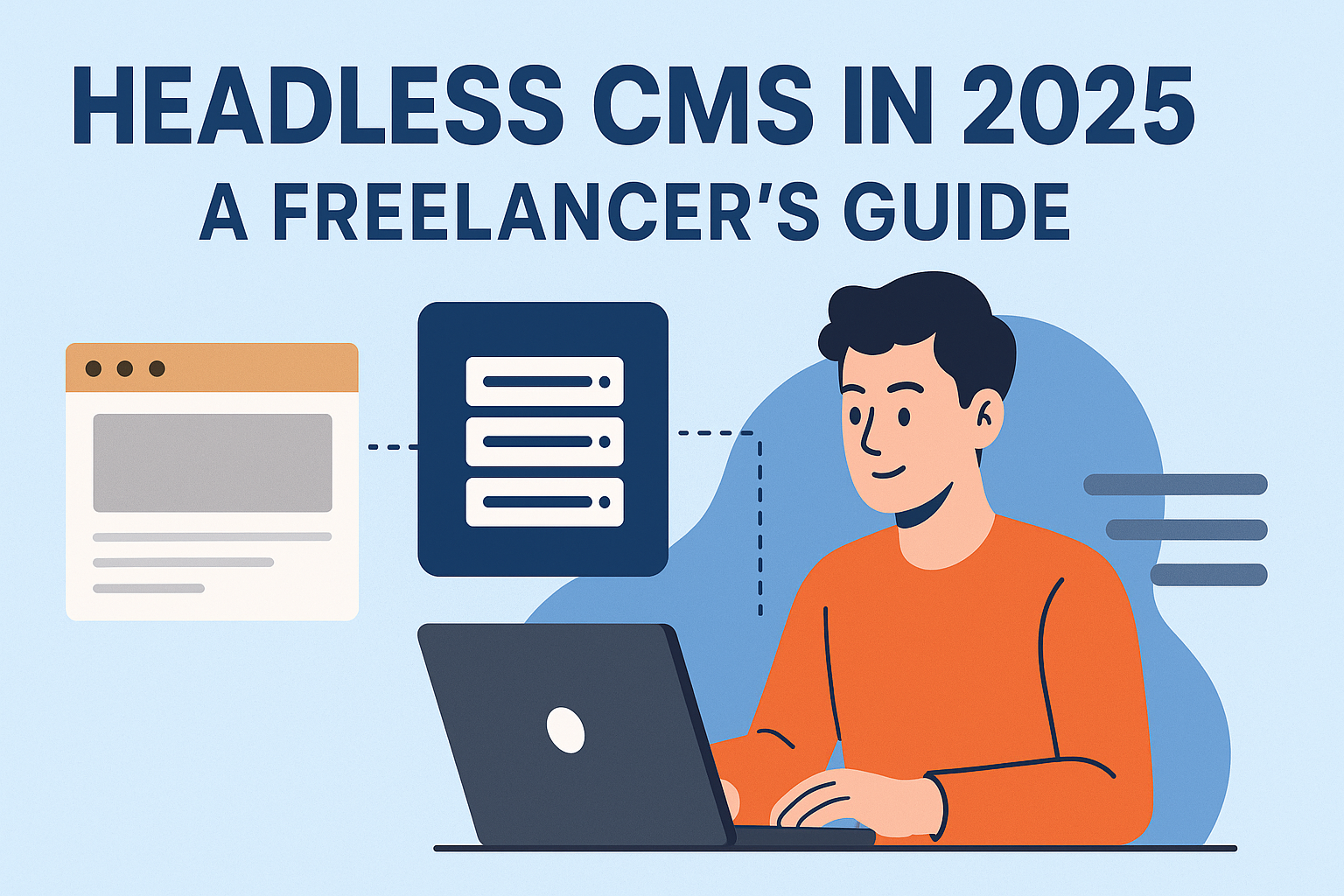The web is evolving fast. In 2025, clients no longer want just a simple website—they expect their content to work seamlessly across apps, devices, and even immersive experiences. That’s where Headless CMS comes in.
If you’re a freelancer looking to stay competitive, understanding headless content management systems isn’t just optional—it’s a smart move that can make your services stand out.
What Is a Headless CMS?
A Headless CMS is a content management system that separates the backend (where content is created and stored) from the frontend (where it’s displayed).
- Traditional CMS: Everything is tied together. For example, a WordPress theme controls both how the site looks and how the content is managed.
- Headless CMS: Content is stored in a backend system and delivered via APIs. You decide how and where that content is displayed—on a website, mobile app, smartwatch, or even an AR/VR headset.
Think of it as a content hub that can feed any digital channel.
Why Headless CMS Matters in 2025
1. Omnichannel Publishing
Businesses want their content everywhere—websites, apps, voice assistants, even digital displays. A headless CMS makes this possible without duplicating work.
2. Speed and SEO Performance
Paired with modern frameworks like Next.js or Astro, headless websites load faster, score higher on Google’s Core Web Vitals, and convert better.
3. Scalability and Security
Because content is delivered through APIs and CDNs, sites handle traffic spikes more easily and are less vulnerable to plugin-based security issues.
4. Developer Flexibility
As a freelancer, you get the freedom to use the tools you prefer—React, Vue, Svelte, or even multiple frontends pulling from the same content source.
5. Client-Friendly Editing
Non-technical clients still get a clean, intuitive dashboard to add or update content—without touching your code.
How Freelancers Can Use Headless CMS
Choose the Right Platform
- Open-source: Strapi, Directus
- SaaS: Contentful, Sanity, Hygraph
- Hybrid: WordPress (running in headless mode with REST or GraphQL APIs)
Real-World Use Cases
- E-commerce stores that need scalability (Shopify + headless frontend).
- Marketing websites or blogs powered by Next.js and Contentful.
- Multi-language content hubs where reuse across channels is key.
Typical Workflow Example
- CMS: Sanity or Contentful for content storage.
- Frontend: Next.js or Remix for rendering.
- Hosting: Vercel or Netlify for global delivery.
- Extras: Cloudinary for image optimization, Stripe for payments, Algolia for search.
Selling It to Clients
- Pitch headless as a future-proof solution—they won’t need a redesign every time a new channel emerges.
- Emphasize that faster sites = better conversions.
- Highlight that their team gets an easy-to-use editor dashboard.
Challenges to Keep in Mind
- Steeper learning curve (APIs, GraphQL, modern frameworks).
- Some SaaS headless CMS tools can be pricey for small businesses.
- For very small, single-site projects, a traditional CMS may still be the simpler option.
Final Thoughts
In 2025, Headless CMS is quickly becoming the standard for building fast, flexible, and future-ready websites. For freelancers, it’s a chance to deliver projects that not only look great today but are built to adapt for tomorrow.
🚀 Ready to stand out as a freelancer? Add “Headless CMS expertise” to your toolkit—it’s one of the most in-demand skills clients are asking for this year.
Looking for a modern website powered by a Headless CMS? Let’s chat about how I can build a future-ready solution for your business.

